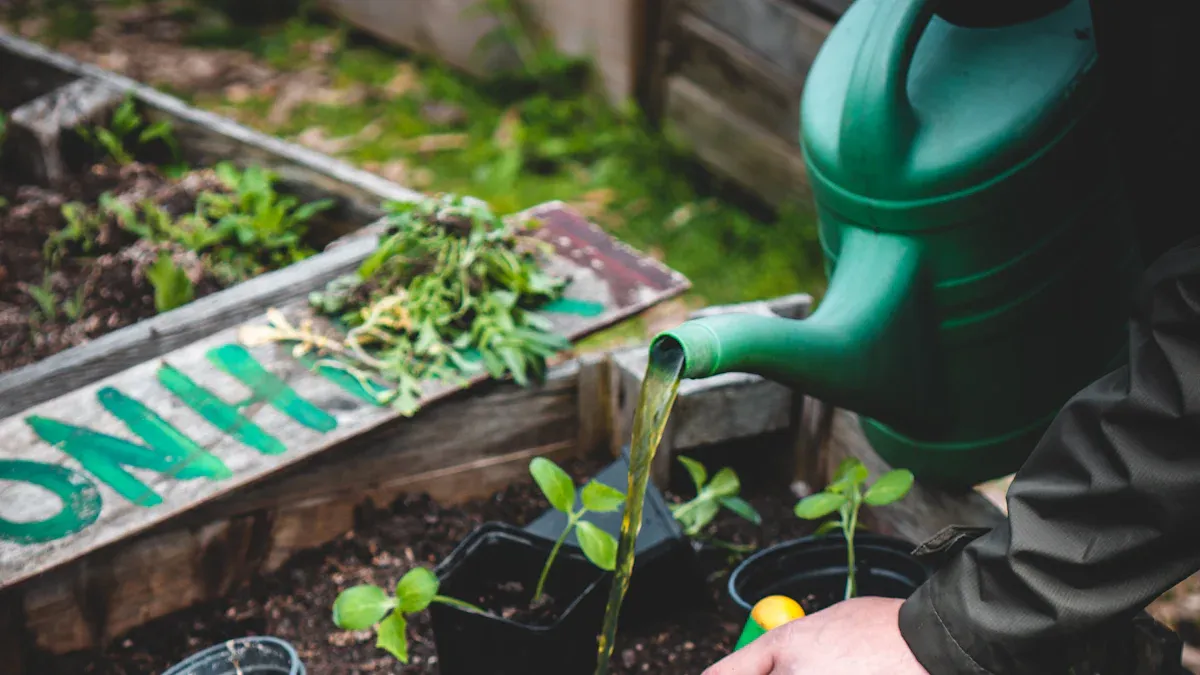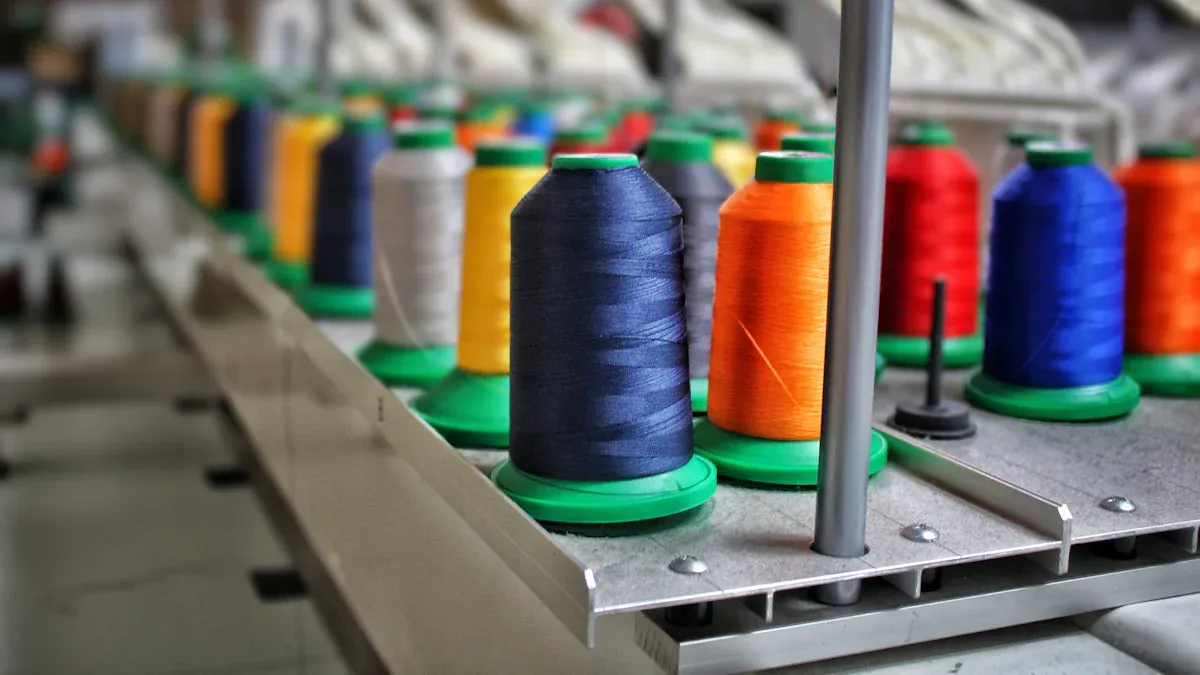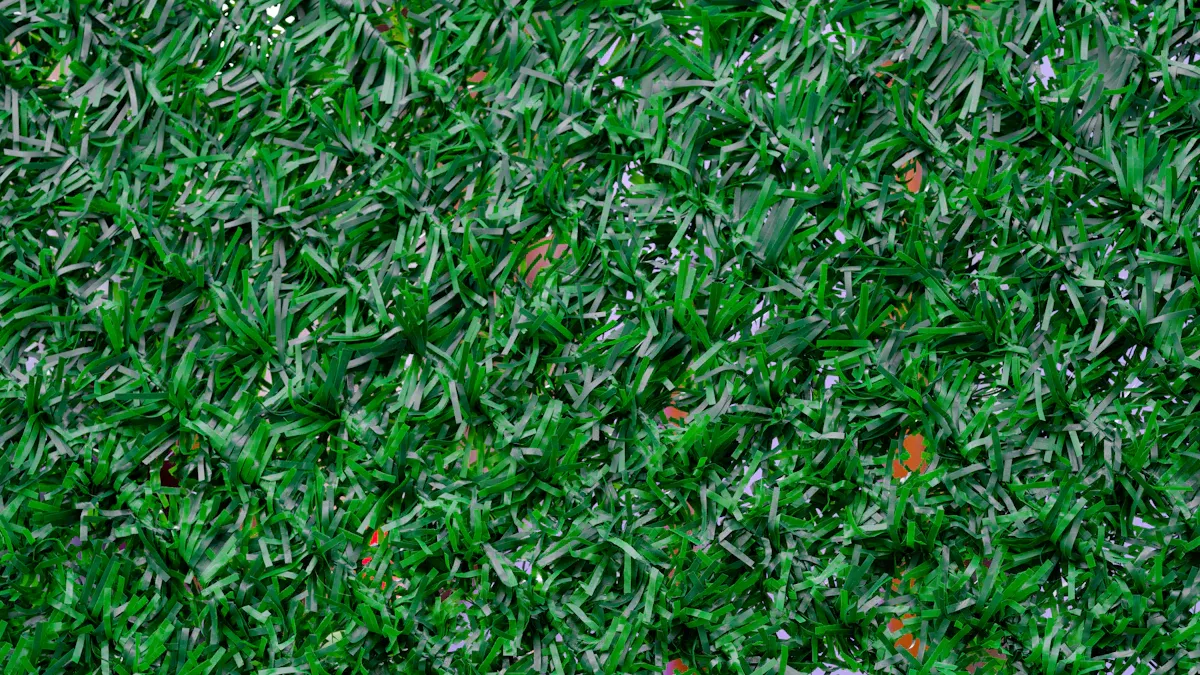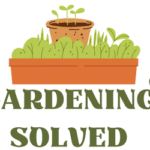
When you think about supporting your plants, the choice of fiber can significantly impact your gardening success. Many gardeners face the decision of Natural vs. Synthetic Fibers. Each type has its unique characteristics that can affect your plants’ growth and health. For instance, natural fibers like jute and hemp are biodegradable and often more affordable, making them suitable for short-term use. However, they can degrade quickly when exposed to moisture. On the other hand, synthetic fibers such as nylon and polyester offer unmatched strength and weather resistance. These factors are essential to consider as you decide which option best fits your gardening and landscaping needs in the context of Natural vs. Synthetic Fibers.
Key Takeaways
Natural fibers like jute and hemp are biodegradable and eco-friendly, making them great for short-term gardening needs.
Synthetic fibers such as nylon and polyester offer superior strength and durability, lasting over 15 years with proper care.
Consider the environmental impact of your choice; natural fibers enrich the soil, while synthetic fibers contribute to pollution.
Evaluate the cost-effectiveness of fibers; synthetic options may have a higher upfront cost but save money in the long run due to their durability.
Regular maintenance of both fiber types can extend their lifespan and improve gardening success.
Effectiveness of Natural vs. Synthetic Fibers

Natural Fiber Options
When you consider natural fibers for plant support, options like hemp and jute stand out. These fibers have impressive tensile strength, which is crucial for supporting your plants effectively.
Hemp: This fiber boasts an average tensile strength ranging from 250 MPa to 277 MPa. Its strength makes it an excellent choice for heavy plants or those that require sturdy support.
Jute: With an average tensile strength of 201.9 MPa, jute is another reliable option. It is often used in gardening for its affordability and biodegradability.
Natural fiber ropes are not only strong but also environmentally friendly. They break down over time, which can be beneficial if you prefer a more sustainable approach to gardening.
Synthetic Fiber Options
On the other hand, synthetic fibers like nylon and polyester offer unmatched strength and durability. These materials are engineered to withstand various environmental conditions, making them ideal for long-term use in your garden.
Fiber Type | Tensile Strength (Breaking Strength) |
|---|---|
Nylon | 1,200 – 1,500 kgf (12.0 – 15.0 kN) |
Polyester | 1,000 – 1,300 kgf (10.0 – 13.0 kN) |
The tensile strength of synthetic fibers far exceeds that of natural fibers. This strength allows you to support larger plants or those that require more robust support systems. Additionally, synthetic fibers resist moisture and weathering, which means they can last longer in outdoor conditions without degrading.
Durability in Gardening

Natural Fiber Durability
Natural fibers like jute and hemp have a lifespan of approximately 1-3 years when used outdoors. Their durability largely depends on environmental conditions. For example, excessive rain can weaken these fibers, while dry spells may harm their structural integrity. Here are some key points about natural fiber durability:
Biodegradability: Natural fibers break down over time, which can be beneficial for the environment but may require more frequent replacements.
Weather Sensitivity: Weather significantly impacts the quality of natural fibers. Humidity and temperature fluctuations can lead to faster degradation.
Synthetic Fiber Durability
In contrast, synthetic fibers like nylon and polyester offer superior durability. They can last over 15 years with proper care. Here’s a comparison of their durability:
Material | Typical Lifespan | Notes |
|---|---|---|
Nylon | Exceeds 15 years | Durable, can remain functional beyond 15-20 years with upkeep |
Polypropylene | Shorter lifespan | Less resistant to wear and UV exposure |
Synthetic fibers resist moisture and UV exposure better than natural fibers. However, temperature fluctuations can still affect their durability. For instance, extreme heat or cold can compromise the structural integrity of polyester. Regular maintenance can help extend the life of synthetic twine.
To maintain both types of fibers, consider these tasks:
Remove debris weekly to prevent buildup.
Inspect seams monthly to ensure they remain secure.
Rinse occasionally to keep surfaces clean.
By understanding the durability of both natural and synthetic fibers, you can make informed choices for your gardening needs.
Environmental Impact of Fibers
Benefits of Natural Fibers
Natural fibers, such as jute and hemp, offer significant environmental advantages. These fibers are biodegradable, meaning they break down naturally over time. This characteristic makes them eco-friendly options for gardening. When you use natural fibers, you contribute to a healthier environment by reducing waste.
Here are some key benefits of natural fibers:
Lower Carbon Emissions: The production of natural fibers typically results in lower carbon emissions compared to synthetic fibers. This reduction helps combat climate change.
Soil Enrichment: As natural fibers decompose, they enrich the soil with organic matter. This process improves soil health and promotes plant growth.
Quick Decomposition: Natural fibers decompose within a few months to a couple of years, depending on the type. For example, coir pots break down in about 9 to 12 months, while peat pots take 1 to 2 years.
Type of Pot | Decomposition Time |
|---|---|
Peat Pots | 1 to 2 years |
Coir (Coconut Fiber) Pots | 9 to 12 months |
Wood Pulp Pots | 6 months to 1 year |
Rice Hull Pots | 6 to 9 months |
Cow Manure Pots | 6 to 12 months |
Bamboo Pots | 1 to 2 years |
Paper or Cardboard Pots | 3 to 6 months |
Starch-Based Plastic Pots | 6 months to 1 year |

Concerns with Synthetic Fibers
While synthetic fibers like nylon and polyester offer durability, they come with significant environmental concerns. These materials are not biodegradable. They can persist in the environment for hundreds of years after disposal. Here are some critical issues associated with synthetic fibers:
Microplastics: A report from the International Union for Conservation of Nature (IUCN) estimated that 35% of all microplastics in the ocean originate from laundering synthetic textiles like polyester. This pollution harms marine life and enters the food chain.
Resource Consumption: The production of synthetic fibers requires non-renewable resources. This process leads to depletion and pollution from fossil fuel extraction.
Chemical Pollution: Manufacturing synthetic fibers often involves harmful chemicals. For instance, nylon production releases nitrous oxide, a potent greenhouse gas. Polyester production uses large amounts of water and can lead to contamination from lubricants.
Environmental Concern | Description |
|---|---|
Non-Biodegradability | Synthetic fibers like polyester and nylon can persist in the environment for hundreds of years, contributing to contamination. |
Microplastics | Washing synthetic fabrics releases microplastics into water systems, harming marine life and entering the food chain. |
Resource Consumption | Production requires non-renewable resources, leading to depletion and pollution from fossil fuel extraction. |
Cost of Twine for Gardening
When choosing the best twine for gardening, cost plays a significant role. You want to find a balance between price, durability, and effectiveness. Let’s explore the pricing of natural and synthetic twine options.
Natural Twine Pricing
Natural twine, such as jute and hemp, offers affordability but varies in price based on quality and type. Here’s a breakdown of average costs for various natural twine products:
Product Description | Price Range (per meter) | Minimum Order Quantity |
|---|---|---|
Colored Jute Rope | $0.01 | 50 rolls |
Cheap Multi Color Natural Hemp Twine | $0.43 | 1500 pieces |
Wholesale Price 100% Jute Fiber 3ply 3mm Jute Cord | $2.10 – $2.30 | 1000 kilograms |
Thick Jute Cord Braided Jute Rope | $0.60 – $1.50 | 20 meters |
Customized 2 Inch Diameter Jute Packaging Ropes | $0.32 – $0.35 | 100 meters |
Natural Color 3-Ply Jute Twine 400g Spool | $1.60 – $2.80 | 100 pieces |
Aosika Customize 6mm Natural Colored 10M Jute Rope | $3.90 | 10 meters |
Jute, 100% natural Jute Material and Twist Rope Type | $1.45 – $1.65 | 500 kilograms |

Synthetic Twine Pricing
Synthetic twine, like nylon and polypropylene, tends to be more expensive upfront but offers greater durability. Here’s a look at the average costs and features of synthetic twine:
Feature | Details |
|---|---|
Material | 100% polypropylene |
Weight | 10 pounds ball |
Applications | Landscaping, agricultural packing, baling, and bundling |
Strength | Superior |
Durability | High |
Resistance | Rot, degradation, rodent damage |
While natural twine may seem cheaper, consider the long-term costs. Synthetic twines last longer and require fewer replacements. This durability makes synthetic twine a more cost-effective choice over time. You can save money by reducing the frequency of purchases.
Choosing between natural and synthetic fibers for plant support depends on your gardening needs. Consider the following features:
Feature | Natural Fibers | Synthetic Fibers |
|---|---|---|
Source | Plant or animal | Man-made using chemical compounds |
Biodegradability | Yes | No |
Durability | Less durable, susceptible to wear | More durable, engineered for strength |
Environmental Impact | Eco-friendly, biodegradable | Contributes to microplastic pollution |
Natural fibers offer eco-friendliness, while synthetic options provide durability. Your choice should reflect your gardening goals and environmental values. As consumer preferences shift towards sustainability, consider how your choices impact the planet. 🌍
FAQ
What are the main differences between natural and synthetic fibers?
Natural fibers come from plants or animals and are biodegradable. Synthetic fibers are man-made and not biodegradable. Natural fibers tend to be less durable, while synthetic fibers offer greater strength and longevity.
How long do natural fibers last in the garden?
Natural fibers like jute and hemp typically last 1-3 years outdoors. Their lifespan depends on environmental conditions, such as moisture and temperature.
Are synthetic fibers harmful to the environment?
Yes, synthetic fibers can contribute to pollution. They do not decompose and can release microplastics into water systems, harming marine life and ecosystems.
Which type of fiber is more cost-effective for long-term use?
While natural fibers may have a lower initial cost, synthetic fibers often prove more cost-effective over time due to their durability and longer lifespan.
Can I compost natural fibers after use?
Yes, you can compost natural fibers. They break down naturally, enriching the soil and promoting healthy plant growth. Just ensure they are free from synthetic additives.

